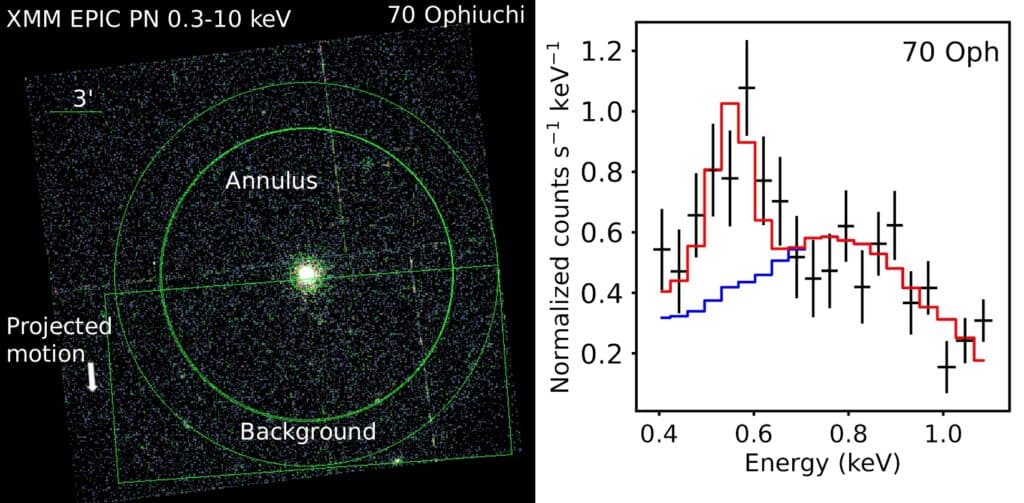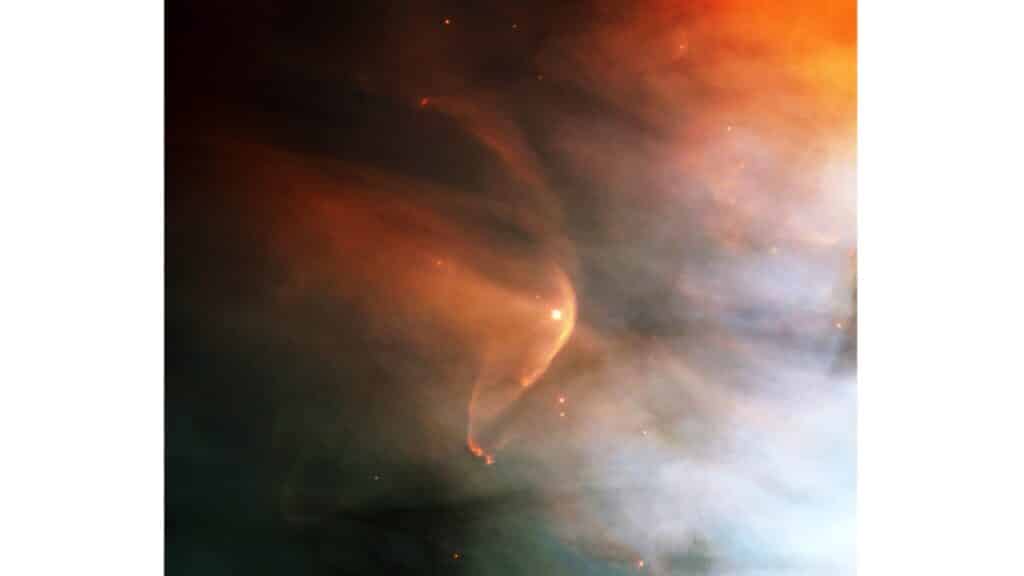History was made after University of Vienna astronomers directly detected stellar winds from three Sun-like stars by recording the X-ray emission from their astrospheres. This achievement — published in the journal Nature Astronomy — marks the first time such winds have been directly observed, providing crucial insights into the evolution of stars and planets.
Astrospheres are the stellar equivalents of the heliosphere that surrounds our solar system. These enormous, hot plasma bubbles are created by stellar winds, which are streams of charged particles emanating from stars. The study of stellar winds from low-mass stars similar to our Sun is essential for understanding the evolution of stars and planets, as these winds can have a significant impact on the development of habitable worlds.
Despite their importance, stellar winds from Sun-like stars have been notoriously difficult to study. These winds are mainly composed of protons and electrons, with a small quantity of heavier, highly charged ions such as oxygen and carbon. When these ions capture electrons from the neutral particles in the interstellar medium surrounding the star, they emit X-rays, which can be detected by telescopes.
Using observations from the XMM-Newton space telescope, University of Vienna researchers detected the X-ray emission from the astrospheres around three Sun-like stars, known as 70 Ophiuchi, epsilon Eridani, and 61 Cygni. By analyzing the spectral fingerprints of the oxygen ions, the researchers were able to determine the quantity of oxygen and, ultimately, the total mass of stellar wind emitted by these stars.
“In the solar system, solar wind charge exchange emission has been observed from planets, comets, and the heliosphere and provides a natural laboratory to study the solar wind’s composition,” says lead study author Kristina Kislyakova, senior scientist at the Department of Astrophysics of the University of Vienna, in a media release. “Observing this emission from distant stars is much more tricky due to the faintness of the signal. In addition to that, the distance to the stars makes it very difficult to disentangle the signal emitted by the astrosphere from the actual X-ray emission of the star itself, part of which is ‘spread’ over the field-of-view of the telescope due to instrumental effects.”
To overcome these challenges, researchers developed a new algorithm to separate the stellar and astrospheric contributions to the emission. This allowed them to detect the charge exchange signals originating from the stellar wind oxygen ions and the surrounding neutral interstellar medium of the three main-sequence stars.
The team estimated the mass loss rates of the three stars to be 66.5±11.1, 15.6±4.4, and 9.6±4.1 times the solar mass loss rate, respectively. These findings suggest that the winds from these stars are much stronger than the solar wind, which may be explained by the stronger magnetic activity of these stars compared to our Sun.

“There have been world-wide efforts over three decades to substantiate the presence of winds around Sun-like stars and measure their strengths, but so far only indirect evidence based on their secondary effects on the star or its environment alluded to the existence of such winds. Our group previously tried to detect radio emission from the winds but could only place upper limits to the wind strengths while not detecting the winds themselves,” explains study co-author Manuel Güdel, from the University of Vienna. “Our new X-ray based results pave the way to finding and even imaging these winds directly and studying their interactions with surrounding planets.”
The direct detection of stellar winds has important implications for understanding the evolution of both stars and planets. Stellar winds can drive processes that lead to the evaporation of planetary atmospheres, resulting in atmospheric mass loss over geological timescales. This mass loss can be a decisive factor in determining whether a planet evolves into a habitable world or an airless rock.
Looking to the future, researchers believe that the direct detection of stellar winds in X-rays will be further facilitated by high-resolution instruments, such as the X-IFU spectrometer on the European Athena mission.
“In the future, this method of direct detection of stellar winds in X-rays will be facilitated thanks to future high resolution instruments, like the X-IFU spectrometer of the European Athena mission,” says study co-author Dimitra Koutroumpa, researcher at the French National Center for Scientific Research. “The high spectral resolution of X-IFU will resolve the finer structure and emission ratio of the oxygen lines (as well as other fainter lines), that are hard to distinguish with XMM’s CCD resolution, and provide additional constraints on the emission mechanism; thermal emission from the stars, or non-thermal charge exchange from the astrospheres.”
This research not only provides the first direct evidence of stellar winds from Sun-like stars but also lays the foundation for future studies that will deepen our understanding of the complex interactions between stars and their surrounding planets. As we continue to explore the universe and search for potentially habitable worlds, the insights gained from this study will prove invaluable in unraveling the mysteries of stellar and planetary evolution.












